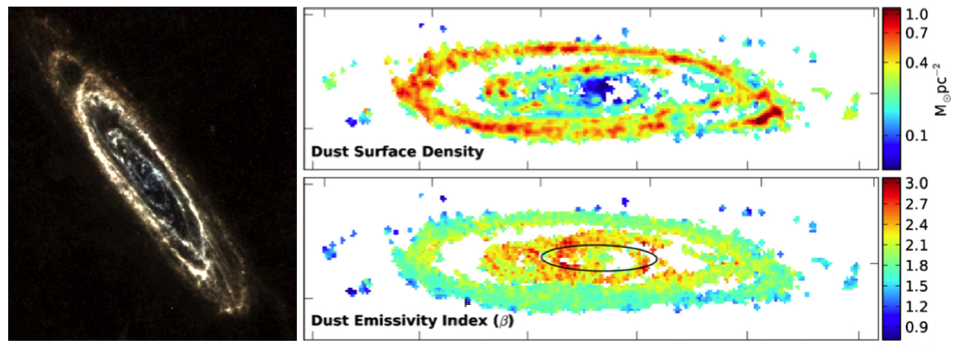Dust in the Andromeda Galaxy

We investigated the dust properties of our nearest spiral galaxy, M31, using data from the Herschel Exploitation of Local Galaxy Andromeda (HELGA, led by Jacopo Fritz, Fritz et al. 2012). The SPIRE image of M31 is shown in the Figure above (left panel), and with the excellent resolution afforded by Herschel and the wavelength coverage from 70-500μm, we were able to create a map of the dust surface density in each pixel (on scales of ~100pc!) for the first time. This allowed us to investigate the variation in the dust temperature, mass and dust emissivity (how well the dust grains absorb and re-emit their light) with radius across the entire galaxy with fantastic resolution. In Smith et al. (2012b, right panel of Figure), we fitted modified blackbodies to the dust emission for approximately 4000 independent pixels, with a spatial resolution of a typical giant molecular cloud complex. For the first time, we were able to study dust emission in an external galaxy with enough resolution to pick out star forming regions! This study highlights the tremendous advance in the quality of data in the far-infrared regime, particularly the major advances in being able to carry out resolved studies of dust in external galaxies. One of the many interesting results from this study was the large variation in the dust emissivity index as one moves outwards from the centre of the galaxy towards the edge, possibly hinting at a real change in the physical properties of the dust grains.